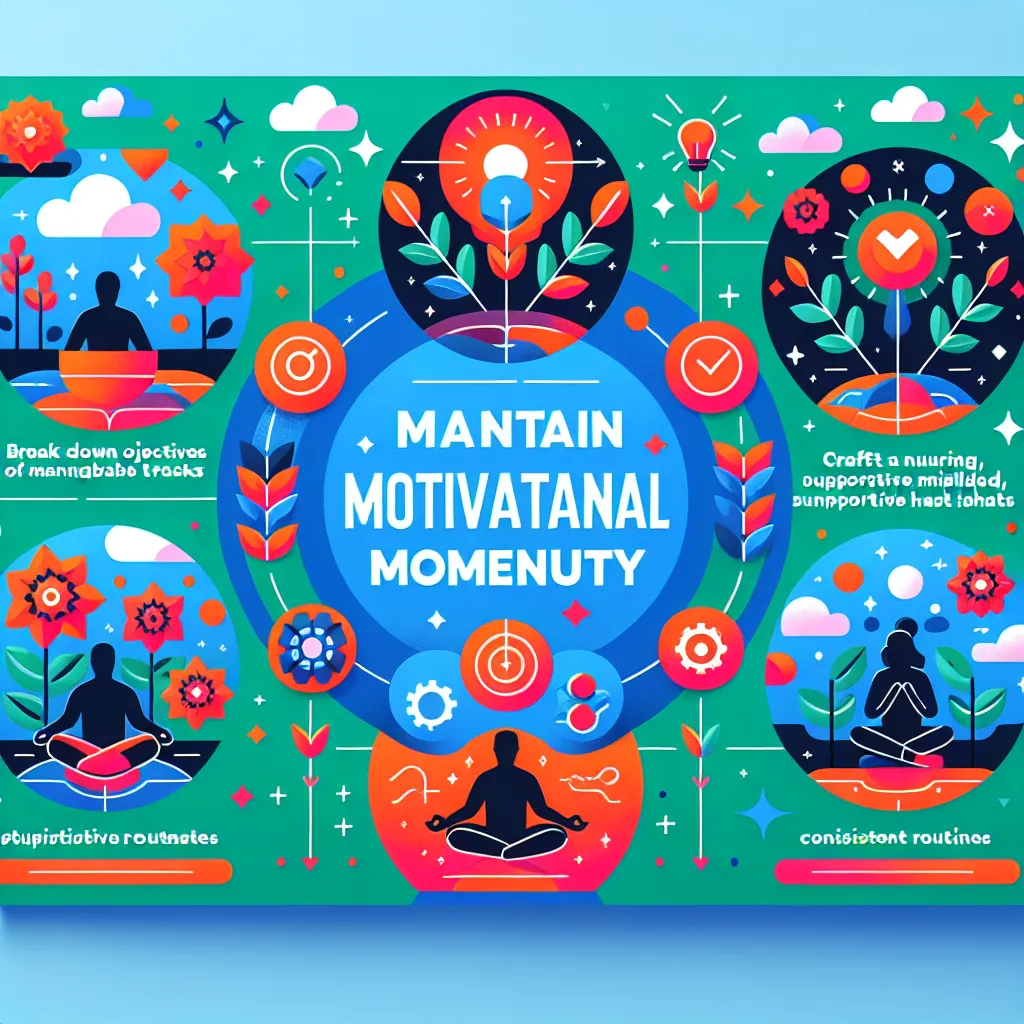The IELTS Reading test is a crucial component of the IELTS exam, assessing candidates’ ability to comprehend complex texts and answer questions accurately. One common theme that often appears in IELTS Reading passages is motivation, particularly how to stay motivated in various aspects of life. This topic has been consistently popular in past exams and, given its relevance to academic and professional success, is likely to reappear in future tests.
In this article, we’ll explore a practice IELTS Reading passage on “How to Stay Motivated,” providing you with an opportunity to enhance your reading skills while learning valuable strategies for maintaining motivation. Let’s dive into this engaging and challenging text, followed by a series of questions to test your comprehension.
Practice Reading Passage: How to Stay Motivated
Staying Motivated: The Key to Long-term Success
Motivation is the driving force behind human achievement, yet it can be elusive and fleeting. In today’s fast-paced world, where distractions abound and goals often seem insurmountable, maintaining motivation is more challenging—and more crucial—than ever. Understanding the science behind motivation and implementing effective strategies can make the difference between giving up and reaching your full potential.
At its core, motivation is linked to the brain’s reward system. When we accomplish a task or make progress towards a goal, our brains release dopamine, a neurotransmitter associated with pleasure and satisfaction. This biochemical reward reinforces the behavior, making us more likely to repeat it in the future. However, the initial surge of motivation that comes with setting a new goal often wanes over time, a phenomenon psychologists call “hedonic adaptation.” To combat this natural tendency and stay motivated in the long term, individuals must employ a variety of techniques and mindset shifts.
One powerful strategy for maintaining motivation is to break large goals into smaller, manageable tasks. This approach, known as “chunking,” allows individuals to experience frequent successes, each triggering a small dopamine release and reinforcing their motivation. For example, rather than focusing on writing an entire book, an author might set daily word count goals. Each day’s achievement becomes a stepping stone towards the larger objective, providing a sense of progress and accomplishment along the way.
Another crucial aspect of staying motivated is cultivating a growth mindset. Developed by psychologist Carol Dweck, the concept of a growth mindset suggests that abilities and intelligence can be developed through effort, learning, and persistence. Individuals with a growth mindset view challenges as opportunities for growth rather than insurmountable obstacles. They are more resilient in the face of setbacks and more likely to persevere towards their goals. By reframing difficulties as learning experiences, people can maintain their motivation even when faced with adversity.
Environmental factors also play a significant role in sustaining motivation. Creating a supportive and inspiring environment can significantly impact one’s ability to stay focused and driven. This might involve surrounding oneself with like-minded individuals, minimizing distractions, or designing a workspace that promotes productivity. Additionally, seeking out mentors or role models who have achieved similar goals can provide inspiration and practical guidance, helping to reignite motivation during challenging times.
The power of habits should not be underestimated when it comes to long-term motivation. By establishing routines and rituals around goal-oriented activities, individuals can reduce the mental energy required to initiate tasks. Over time, these habits become ingrained, making it easier to maintain consistent progress even when motivation fluctuates. For instance, a regular exercise routine can become automatic, requiring less willpower to maintain once it becomes a part of one’s daily schedule.
Intrinsic motivation, driven by personal interest and enjoyment, is generally more sustainable than extrinsic motivation, which relies on external rewards or punishments. Finding ways to connect goals with personal values and interests can transform tedious tasks into meaningful pursuits. This might involve reframing work responsibilities in terms of how they contribute to personal growth or aligning fitness goals with a love for nature through outdoor activities.
Finally, the practice of self-compassion is essential for maintaining long-term motivation. Perfectionism and harsh self-criticism can be demotivating, leading to burnout or giving up entirely. By treating oneself with kindness and understanding, especially in the face of setbacks, individuals can maintain a positive outlook and the resilience necessary to pursue their goals over time.
In conclusion, staying motivated is not about maintaining a constant state of high energy and enthusiasm. Rather, it’s about developing a toolkit of strategies to navigate the inevitable ups and downs of pursuing long-term goals. By understanding the psychological and neurological basis of motivation, breaking down goals, cultivating a growth mindset, creating supportive environments, building habits, fostering intrinsic motivation, and practicing self-compassion, individuals can sustain their drive and achieve remarkable things. The journey towards any significant achievement is rarely linear, but with these tools at hand, staying motivated becomes not just possible, but a rewarding part of the process itself.
 Motivation Strategies Infographic
Motivation Strategies Infographic
Questions
True/False/Not Given
- Motivation is directly linked to the brain’s reward system.
- Hedonic adaptation refers to the tendency for motivation to increase over time.
- Breaking large goals into smaller tasks is called “chunking.”
- A growth mindset believes that intelligence is fixed and cannot be developed.
- Environmental factors have no impact on an individual’s motivation.
Multiple Choice
-
According to the passage, which of the following is NOT mentioned as a strategy for maintaining motivation?
A) Breaking goals into smaller tasks
B) Cultivating a growth mindset
C) Creating a supportive environment
D) Competing with others -
The concept of a “growth mindset” was developed by:
A) Sigmund Freud
B) Carol Dweck
C) B.F. Skinner
D) Abraham Maslow
Matching Information
Match the following concepts with their descriptions:
- Intrinsic motivation
- Extrinsic motivation
- Self-compassion
A) Driven by external rewards or punishments
B) Treating oneself with kindness and understanding
C) Driven by personal interest and enjoyment
Short Answer Questions
-
What neurotransmitter is associated with pleasure and satisfaction when we accomplish a task? (Maximum 2 words)
-
What term is used to describe the process of making habits become automatic, requiring less willpower? (Maximum 3 words)
Answer Key and Explanations
-
True – The passage states, “At its core, motivation is linked to the brain’s reward system.”
-
False – The text mentions that hedonic adaptation is “the initial surge of motivation that comes with setting a new goal often wanes over time.”
-
True – The passage explicitly states, “This approach, known as ‘chunking,’ allows individuals to experience frequent successes.”
-
False – The passage describes a growth mindset as believing “that abilities and intelligence can be developed through effort, learning, and persistence.”
-
Not Given – The passage discusses the importance of environmental factors but doesn’t compare their impact to other factors.
-
D – Competing with others is not mentioned in the passage as a strategy for maintaining motivation.
-
B – The passage states, “Developed by psychologist Carol Dweck, the concept of a growth mindset…”
-
C – The passage defines intrinsic motivation as “driven by personal interest and enjoyment.”
-
A – Extrinsic motivation is described as relying “on external rewards or punishments.”
-
B – Self-compassion is described as “treating oneself with kindness and understanding.”
-
Dopamine – The passage mentions, “When we accomplish a task or make progress towards a goal, our brains release dopamine.”
-
Establishing routines – The text states, “By establishing routines and rituals around goal-oriented activities, individuals can reduce the mental energy required to initiate tasks.”
Common Mistakes to Avoid
When tackling IELTS Reading questions like these, be aware of these common pitfalls:
-
Overthinking: Sometimes the answer is directly stated in the text. Don’t complicate simple statements.
-
Falling for distractors: In multiple choice questions, incorrect options often use words from the text but in the wrong context.
-
Ignoring qualifiers: Words like “sometimes,” “often,” or “may” can change the meaning of a statement significantly.
-
Not reading the whole passage: The answer you need might be in a different paragraph than where the topic is first introduced.
-
Misinterpreting Not Given: Remember, if the information isn’t explicitly stated or clearly implied, it’s Not Given, even if it seems logical.
Vocabulary Focus
- Elusive: difficult to find, catch, or achieve
- Insurmountable: too great to be overcome
- Hedonic adaptation: the tendency to quickly return to a relatively stable level of happiness despite major positive or negative events
- Cultivating: trying to acquire or develop a quality or skill
- Persevere: continue in a course of action even in the face of difficulty
- Intrinsic: belonging naturally; essential
- Extrinsic: not part of the essential nature of someone or something; coming or operating from outside
Grammar Spotlight
Pay attention to the use of conditional sentences in the passage, such as:
“By reframing difficulties as learning experiences, people can maintain their motivation even when faced with adversity.”
This is an example of a zero conditional sentence, used to express general truths or scientific facts. The structure is:
If/When + present simple, present simple
This structure is often used in academic and scientific writing to describe cause and effect relationships or general principles.
Tips for IELTS Reading Success
-
Practice active reading: Engage with the text by highlighting key points and making mental summaries as you read.
-
Improve your vocabulary: A broader vocabulary will help you understand complex texts more easily. Try to learn new words in context.
-
Time management: Allocate your time wisely between reading the passage and answering questions. Don’t spend too long on any single question.
-
Skim and scan: Use these techniques to quickly locate specific information in the text.
-
Read the questions first: This can help you focus on relevant information as you read the passage.
-
Pay attention to paragraph structure: Topic sentences and concluding sentences often contain key information.
-
Practice regularly: Consistent practice with various types of texts and question formats will improve your skills and confidence.
Remember, staying motivated during your IELTS preparation is crucial for success. Apply the strategies discussed in this passage to your own study routine. Break your study goals into manageable tasks, cultivate a growth mindset, create a supportive study environment, and be kind to yourself throughout the process. With dedication and the right approach, you can achieve your desired IELTS score.
For more tips on staying motivated during your IELTS preparation, check out our article on how to stay motivated in challenging times. Additionally, if you’re preparing for the IELTS Speaking test, you might find our guide on describing a time when you had to stay motivated helpful for practice and inspiration.


